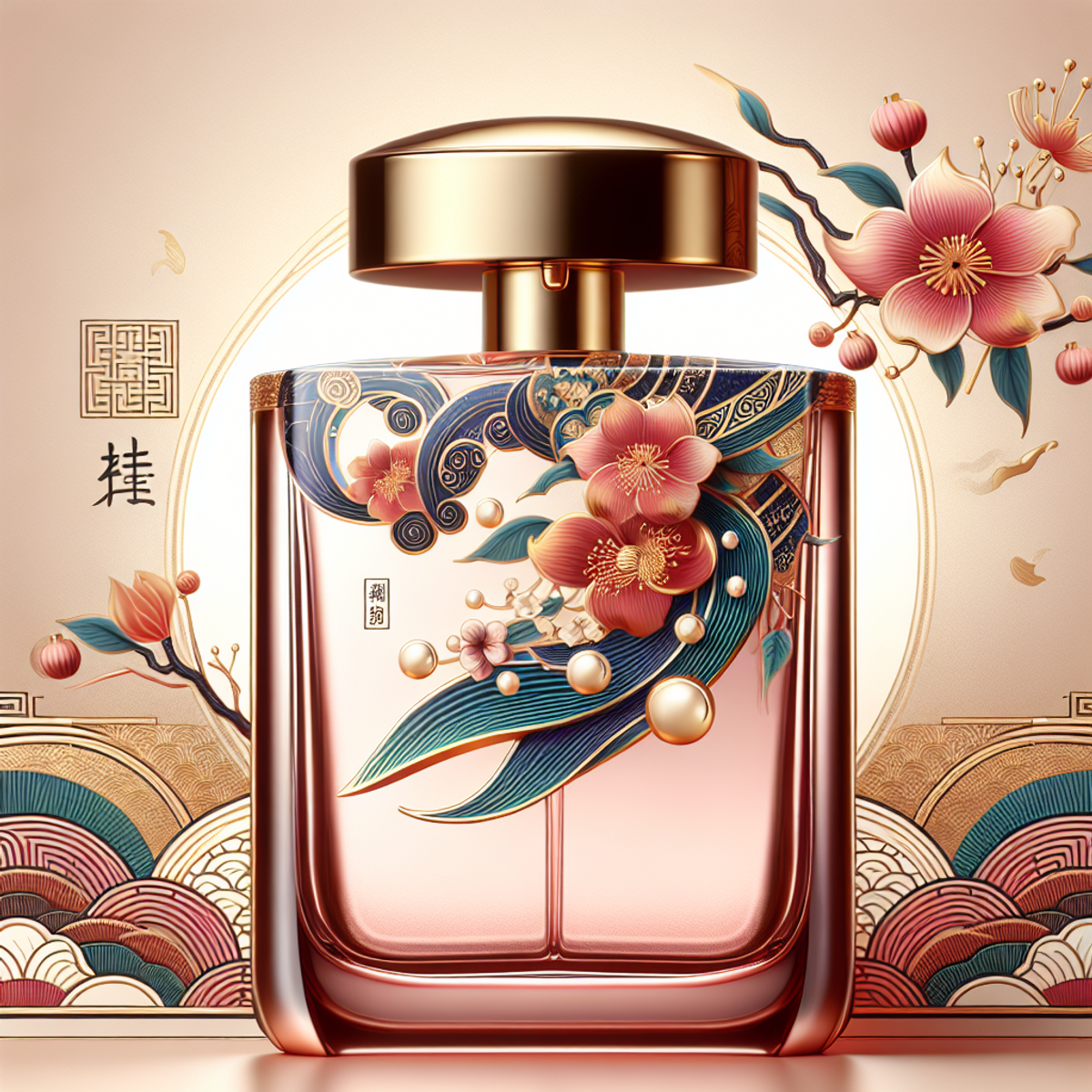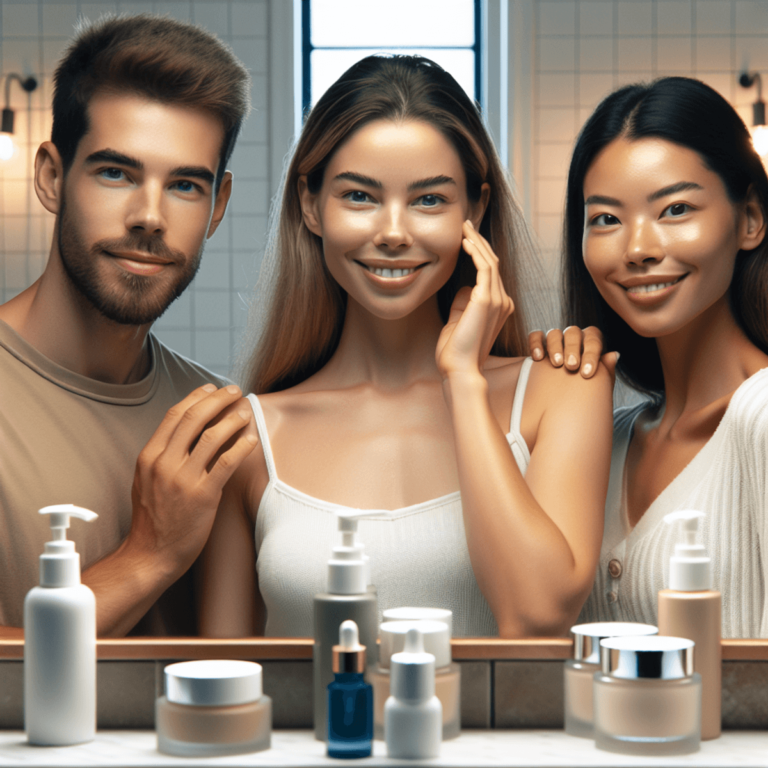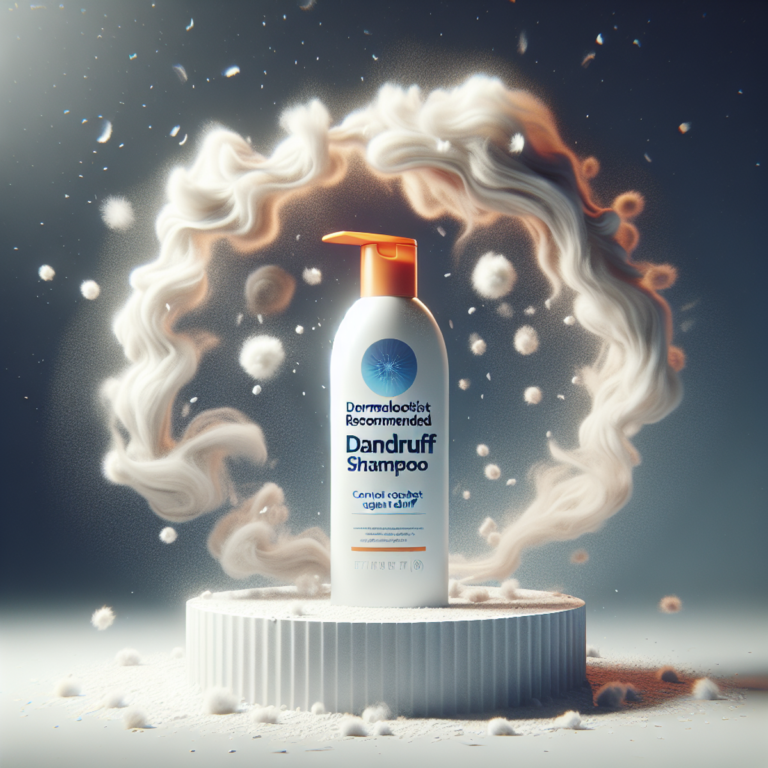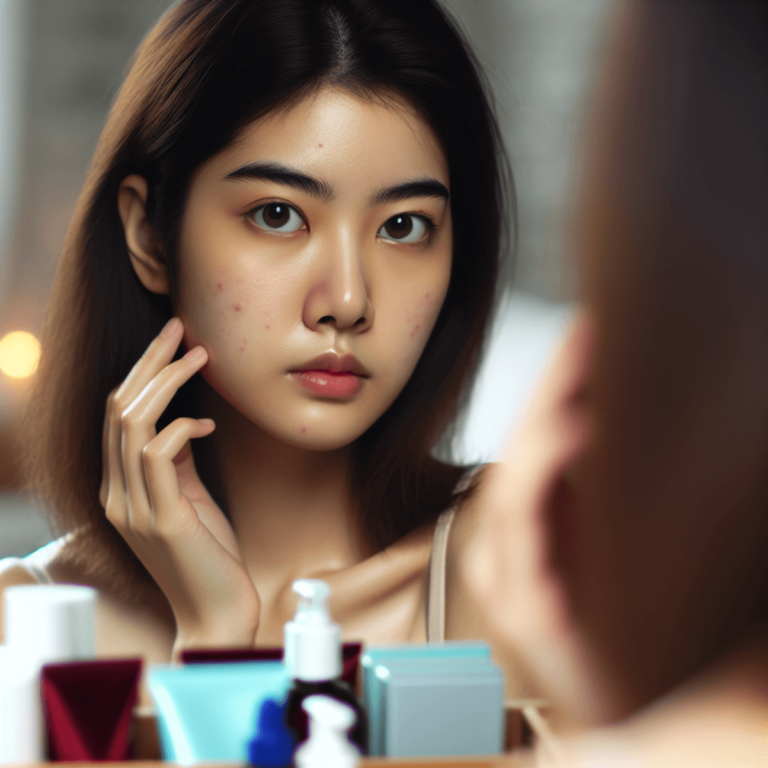5 Key Trends For High-End Cosmetics Market in China

Introduction
The high-end cosmetics market in China is constantly changing and evolving. Many factors contribute to this, such as what consumers prefer and new technologies. It’s important for businesses to understand these trends if they want to succeed and take advantage of opportunities. In this article, we will explore the five main trends that are shaping the high-end cosmetics market in China. This information will be valuable for companies in the industry who want to navigate this complex market successfully.
Why It’s Important to Understand the Key Trends in the High-End Cosmetics Market in China
To do well in the competitive high-end cosmetics industry in China, businesses need to know what trends are popular. By understanding and adapting to these trends, companies can position themselves well, predict changes in consumer behavior, and adjust their products and marketing strategies accordingly. This proactive approach helps businesses stay ahead and stay relevant in a market that is always changing.
Overview of the 5 Key Trends
The five key trends that we will look at in detail include many different factors that have an impact on the high-end cosmetics market in China:
- More People Wanting Expensive Beauty Products: We will look at why there is a big demand for high-end cosmetics and what it means. We’ll also analyze why this trend is happening, like people having more money to spend and ideas about beauty changing.
- New Opportunities for Expensive Skincare, Luxury Makeup, and Perfume: This trend is about how people in China are starting to buy more expensive skincare products, luxury makeup items, and fancy perfumes. Businesses can take advantage of these opportunities by finding areas where they can grow and changing their plans to fit those areas.
- Different Types of Customers: Trying to Sell to Rich Young Buyers: As time goes on, the types of people who buy things are changing a lot. This is especially true with younger people born after 2000 and men. Brands need to change how they do things to get these young people interested and make them stay interested.
- More Small Brands Becoming Popular: We will talk about why small brands that only sell a few things are becoming more popular. These brands are good at giving customers what they want, like things made just for them or things that are hard to find anywhere else.
- Using Online Marketing and Selling Things on the Internet to Succeed: In today’s world, everyone uses the internet a lot. This is why it’s so important for brands to use websites and social media to talk to their customers and sell things online. We will look at how this helps brands connect with the right people and make them want to buy things.
Our goal is to give businesses a lot of information about each of these trends so they can make good choices and be successful in the high-end cosmetics market in China.
1. Growing Preference for Premium Beauty Products
The high-end cosmetics market in China is experiencing a significant trend towards the growing preference for premium beauty products. Here are some key points to consider:
- The demand for high-end cosmetics in China has been steadily increasing, with consumers showing a strong inclination towards premium beauty products. This trend is reshaping the beauty industry in the region, leading to new opportunities and challenges for businesses operating in this space.
- The local market has witnessed a surge in the demand for high-end cosmetics, reflecting a shift in consumer preferences towards premium beauty products. This growing demand is fueled by various factors, including changing lifestyle choices and evolving beauty standards among Chinese consumers.
- In 2021, the retail sales of premium beauty products in China amounted to an impressive 27.22 billion yuan, underscoring the robust market potential for high-end cosmetics (source). Moreover, projections indicate a continued upward trajectory in retail sales figures, signaling sustained growth and opportunities within this segment.
- Several factors contribute to the increasing preference for premium beauty products in China. These include rising disposable incomes among consumers, enabling them to invest in higher-quality cosmetics. Additionally, evolving beauty standards and aspirations for luxury lifestyles have propelled the demand for premium beauty products, reflecting a shift towards more sophisticated and indulgent consumer choices (source).
The surge in demand, coupled with robust retail sales figures and evolving consumer behaviors, underscores the significance of this trend within the industry. As businesses navigate these dynamics, understanding and adapting to the drivers behind this growing preference will be crucial for capitalizing on the abundant opportunities presented by the high-end cosmetics market in China.
2. Emerging Opportunities in Premium Skincare, Luxury Makeup, and Fragrances
The high-end cosmetics market in China is experiencing a significant surge in demand for premium skincare products, luxury makeup, and fragrances. This trend presents exciting opportunities for businesses looking to capitalize on the growing consumer interest and preferences. Here are some key points to consider:
Rise in Demand for Premium Skincare Products and Luxury Makeup in China
- Chinese consumers have shown an increasing inclination towards high-quality skincare products that offer visible results and long-term benefits. This has led to a surge in demand for premium skincare products with innovative formulations catering to specific skin concerns such as anti-aging, brightening, and hydration.
- The desire for flawless skin and youthful appearance has driven the popularity of luxury makeup brands in China. Consumers are willing to invest in high-end makeup products that provide superior coverage, long-lasting wear, and innovative formulas. Influencers on social media platforms like Weibo, Douyin, and Xiaohongshu often showcase their skincare routines and makeup looks, influencing consumers’ purchasing decisions.
- The rise of Chinese beauty brands has also contributed to the increased demand for premium skincare products. These local brands understand the unique needs of Chinese consumers and offer tailored solutions.
Opportunities for Businesses to Capitalize on in the High-End Skincare, Makeup, and Fragrance Market
- Customization is an area where businesses can excel. Offering personalized skincare solutions tailored to individual needs can attract discerning customers who value personalized experiences.
- Luxury makeup brands can tap into the Chinese market by developing unique product offerings that cater to diverse skin tones and preferences. Providing a wide range of shades and finishes will resonate with consumers who seek inclusivity.
- The fragrance market is also experiencing growth in China, particularly among the younger generation. Tapping into China’s young demographic with unique fragrance offerings that align with their preferences and aspirations presents a significant opportunity for businesses.
- Niche fragrances are gaining traction among Chinese consumers who seek exclusivity and differentiation. Businesses can explore collaborations with local influencers or celebrities to create limited-edition fragrances that resonate with their followers.
Potential Growth Areas within the Category of High-End Perfumes and Fragrances
- The rise of e-commerce platforms, such as Tmall and JD.com, has made it easier for consumers to access a wide variety of high-end perfumes and fragrances. Businesses can leverage these platforms to reach a broader customer base and provide a seamless online shopping experience.
- Furthermore, understanding the unique characteristics of the Chinese cosmetics market and consumer behavior can help businesses tailor their strategies accordingly, ensuring maximum impact in this rapidly growing market segment.
The emerging opportunities in premium skincare, luxury makeup, and fragrances within the high-end cosmetics market in China present an exciting landscape for businesses. By understanding consumer preferences and leveraging innovative strategies, companies can position themselves for success in this rapidly growing market segment.
3. Shifting Consumer Demographics: Targeting the New Generation of Affluent Buyers
In the high-end cosmetics market in China, consumer demographics are changing, and this has important implications for businesses. To succeed in this profitable industry, it is crucial for companies to understand these changes and how they can attract and retain customers. Here are the key points to consider:
Description of Trend 3
The demographic makeup of high-end cosmetic consumers in China has been evolving rapidly. One significant factor is the rise of post-2000 demographics who have become key customers in recent years. This younger generation has grown up in an era of economic prosperity and globalization, making them more open to spending on luxury goods, including high-end cosmetics.
Another noteworthy trend is the increasing presence of male consumers in the high-end cosmetics market. Traditionally, cosmetics were predominantly marketed towards women, but male consumers now represent a growing segment of the market. Men are becoming more conscious of their appearance and are willing to invest in skincare and grooming products.
Impact of Post-2000 Demographics and Male Consumers
The emergence of post-2000 demographics and male consumers has brought about significant changes in the industry’s landscape. Brands need to adapt their marketing strategies and product offerings to cater to these new consumer groups effectively.
Post-2000 demographics, primarily aged 19-29 years old, have distinct preferences and values compared to older generations. They prioritize individuality, self-expression, and quality when it comes to purchasing high-end cosmetics. These consumers are digitally savvy and rely heavily on social media platforms for product information and recommendations.
Male consumers also have unique demands when it comes to high-end cosmetics. They seek products that cater specifically to their needs, such as skincare products tailored for men’s skin concerns or gender-neutral fragrances. By targeting male consumers, brands can tap into an untapped market segment and unlock new growth opportunities.
Key Strategies to Attract and Retain Young Consumers, Particularly Gen Z
To effectively target and appeal to young consumers, particularly Gen Z, high-end cosmetic brands should consider the following strategies:
- Digital Engagement: Leverage social media platforms such as Weibo, Douyin, and Xiaohongshu to engage with young consumers. Create compelling content that resonates with their values and preferences. Collaborate with influencers or Key Opinion Leaders (KOLs) who have a strong following among Gen Z.
- Personalization: Offer personalized experiences and products tailored to individual preferences. Gen Z consumers value customization and uniqueness. For example, brands can provide virtual try-on features or personalized skincare routines based on skin types.
- Authenticity: Gen Z consumers appreciate transparent and authentic brand communication. Be genuine in your messaging and showcase the brand’s commitment to sustainability, inclusivity, or other social causes that resonate with this generation.
- Omnichannel Approach: Provide a seamless shopping experience across both online and offline channels. Gen Z consumers often research products online but may still prefer the tactile experience of trying out products in-store before making a purchase decision.
- Community Building: Foster a sense of community by creating online forums or hosting events where young consumers can connect with like-minded individuals who share their passion for high-end cosmetics.
By implementing these strategies, high-end cosmetic brands can effectively attract and retain young consumers, particularly Gen Z, who are poised to become the driving force behind the industry’s future growth in China.
The shifting consumer demographics in the high-end cosmetics market in China present both challenges and opportunities for market players. By understanding the preferences and behaviors of post-2000 demographics and male consumers, brands can tailor their offerings and marketing efforts to effectively target these new customer segments. With the right strategies in place, businesses can position themselves for success in this evolving landscape.
4. The Rise of Niche Brands: Catering to Unique Preferences of Discerning Customers
The high-end cosmetics market in China is experiencing a significant shift in consumer preferences, and one noticeable trend is the rise of niche brands. These brands have gained popularity among discerning customers who seek products that cater to their unique preferences. Here, we will delve into the increasing prominence of niche brands in the Chinese market and explore the distinctive advantages they offer to consumers.
Niche Brands: Focusing on Specific Markets within the Beauty Industry
Niche brands are characterized by their focus on specific target markets or niche segments within the beauty industry. Unlike mainstream brands, which often have a broad range of products to appeal to a wide customer base, niche brands concentrate on meeting the specific needs and desires of a particular group of consumers. These brands aim to create a more personalized and exclusive experience for their customers, offering products that cater to their unique preferences.
Why Niche Brands Are Gaining Popularity in China’s High-End Cosmetics Market
In recent years, niche brands have gained traction in the high-end cosmetics market in China. Consumers are becoming more discerning and seeking out products that align with their individual tastes and values. They are no longer content with mass-produced items but instead desire something more exclusive and tailored to their needs.
Chinese consumers are increasingly embracing niche brands as they appreciate the attention to detail and craftsmanship these brands offer. Niche beauty products are often seen as higher quality and more authentic, providing consumers with a sense of luxury and exclusivity.
The Advantages of Niche Brands for Discerning Customers
Niche brands provide several distinctive advantages that resonate with discerning customers in the Chinese market:
- Personalization: Personalized experiences have become highly valued by consumers, and niche brands excel in this area. They understand that individuals have different skin types, concerns, and preferences when it comes to cosmetics. As a result, many niche brands offer customized solutions, such as personalized skincare regimens or tailor-made foundation shades. This level of personalization creates a deeper connection between the brand and the consumer, fostering loyalty and trust.
- Exclusivity: Niche brands often produce limited quantities of their products, creating a sense of exclusivity and rarity. Limited editions and collaborations with artists or influencers further enhance this exclusivity. Chinese consumers, particularly younger generations, are drawn to unique and limited-edition items that allow them to stand out from the crowd.
- Innovation: Niche brands are known for their innovative formulations and cutting-edge technologies. They are often at the forefront of trends and developments in the beauty industry, constantly pushing boundaries to create new and exciting products. Chinese consumers, who are increasingly knowledgeable about beauty trends, appreciate the innovation that niche brands bring to the market.
- Authenticity: Many niche brands have a strong brand story and a clear mission that resonates with consumers. They emphasize transparency, sustainability, or cruelty-free practices, which align with the values of discerning customers. Chinese consumers are becoming more conscious of ethical and sustainable practices in the beauty industry, and niche brands often fulfill these expectations.
By offering personalization, exclusivity, innovation, and authenticity, niche brands have carved out a significant space in the high
5. Leveraging Digital Marketing Channels and E-commerce Strategies for Success
The high-end cosmetics market in China is constantly changing, and one of the key trends shaping the industry is the increasing reliance on digital marketing channels and e-commerce strategies. In this section, we will explore the importance of digital marketing, the role of e-commerce platforms (such as Tmall and JD.com), and the influence of social media platforms in driving success for high-end cosmetic businesses.
The Rise of Digital Marketing in the High-End Cosmetics Market
In recent years, digital marketing has become a crucial tool for reaching and engaging with target consumers in the high-end cosmetics market in China. With more people using the internet and smartphones, brands have realized the importance of having a strong online presence to stay ahead. Here’s how digital marketing is making an impact:
- Reaching a Wider Audience: Digital marketing allows brands to expand their reach beyond traditional boundaries. By using techniques like search engine optimization (SEO), pay-per-click (PPC) advertising, email marketing, and content creation, brands can increase their visibility and attract potential customers.
- Targeting Specific Consumers: Digital marketing enables precise targeting based on demographics, interests, and behavior. Brands can create personalized advertisements tailored to specific consumer segments, increasing the chances of turning leads into customers.
- Building Relationships through Social Media: Social media platforms provide an interactive space where brands can connect with their audience through engaging content, influencer collaborations, and community building. By actively participating in conversations and addressing customer concerns promptly, brands can cultivate a loyal customer base.
The Transformation of Luxury Cosmetics Shopping through E-commerce Platforms
E-commerce platforms have completely changed the way luxury cosmetics are bought and sold, playing a crucial role in the success of high-end cosmetic businesses. Here’s how they are making a difference:
- Convenience and Accessibility: E-commerce platforms like Tmall and JD.com offer consumers the convenience of shopping for high-end cosmetics from anywhere. With just a few clicks, customers can explore a wide range of products, compare prices, read reviews, and make secure online transactions.
- Ensuring Product Authenticity: Counterfeit products are a concern for luxury brands in China. E-commerce platforms provide a controlled environment where brands can guarantee the authenticity of their products, giving consumers peace of mind when making purchases.
- Gaining Insights from Data: E-commerce platforms provide valuable data insights that help brands understand consumer preferences, buying patterns, and market trends. This information can be used to improve marketing strategies, refine product offerings, and drive business growth.
The Power of Social Media in Influencing Consumer Behavior
Social media platforms have a significant impact on shaping consumer perceptions and driving sales for high-end beauty products. Here’s why they play a crucial role:
- Creating Brand Awareness: Social media platforms like Weibo, Douyin (TikTok), and Xiaohongshu (Little Red Book) allow brands to showcase their products, share user-generated content, and collaborate with influencers to increase brand visibility among their target audience.
- Influencing Purchase Decisions: Influencers and key opinion leaders (KOLs) have a strong presence
Future Outlook for the High-End Cosmetics Industry in China
The high-end cosmetics market in China has shown tremendous growth and potential over the years, and the future outlook for this industry looks promising. With changing consumer preferences, evolving demographics, and advancements in technology, the market is expected to witness several key trends that will shape its trajectory.
Anticipated Growth Trajectory
The high-end cosmetics market in China is projected to continue its upward trajectory, driven by various factors such as increasing disposable income, growing middle class, and changing beauty standards. According to a report by Statista, the local market accumulated a total retail sales of 27.22 billion yuan in 2021. This figure is expected to grow significantly in the coming years as more consumers are willing to invest in premium beauty products.
Evolving Dynamics of the Market
As the market continues to evolve, there are several key dynamics that businesses need to be aware of:
- Shift towards sustainability: Sustainability and environmental consciousness are becoming increasingly important for Chinese consumers. Brands that prioritize eco-friendly practices and ingredients are likely to gain a competitive edge in the high-end cosmetics market.
- Rise of clean beauty: Clean beauty products, which are free from harmful chemicals and toxins, are gaining popularity among Chinese consumers. Brands that offer clean and natural formulations are expected to see increased demand in the future.
- Growing influence of K-beauty: Korean beauty trends have had a significant impact on the Chinese cosmetics market. The popularity of K-beauty products and skincare routines is expected to continue influencing consumer preferences and driving sales.
- Digital transformation: The digital landscape will play a crucial role in shaping the future of the high-end cosmetics industry in China. E-commerce platforms such as Tmall and JD.com will continue to dominate online sales, while social media platforms like Weibo, Douyin, and Xiaohongshu will remain important for brand promotion and consumer engagement.
Adapting to the Future Trends
To thrive in the future high-end cosmetics market in China, businesses need to adapt their strategies accordingly:
- Invest in research and development: To meet the evolving demands of Chinese consumers, brands should invest in research and development to create innovative and high-quality beauty products. This includes developing clean and sustainable formulations, as well as incorporating traditional Chinese ingredients into their offerings.
- Enhance online presence: With the increasing importance of digital marketing and e-commerce platforms, brands should focus on enhancing their online presence. This includes optimizing their websites for mobile devices, leveraging social media platforms to engage with consumers, and partnering with influencers to promote their products.
- Personalization and customization: As consumers seek unique and personalized experiences, brands should offer customized beauty solutions. This can include personalized skincare routines, tailored makeup recommendations, or even personalized packaging options.
- Collaborations and partnerships: Collaborations with other brands or influencers can help high-end cosmetics brands expand their reach and attract new customers. By partnering with complementary brands or collaborating on limited-edition collections, companies can create buzz and generate excitement among consumers.
In conclusion, the future outlook for the high-end cosmetics industry in China is promising. With anticipated growth in retail sales and evolving dynamics, businesses need to stay updated on the latest trends and adapt their strategies accordingly. By embracing sustainability, clean beauty, digital transformation, and personalized experiences, brands can position themselves for success in this competitive market.










